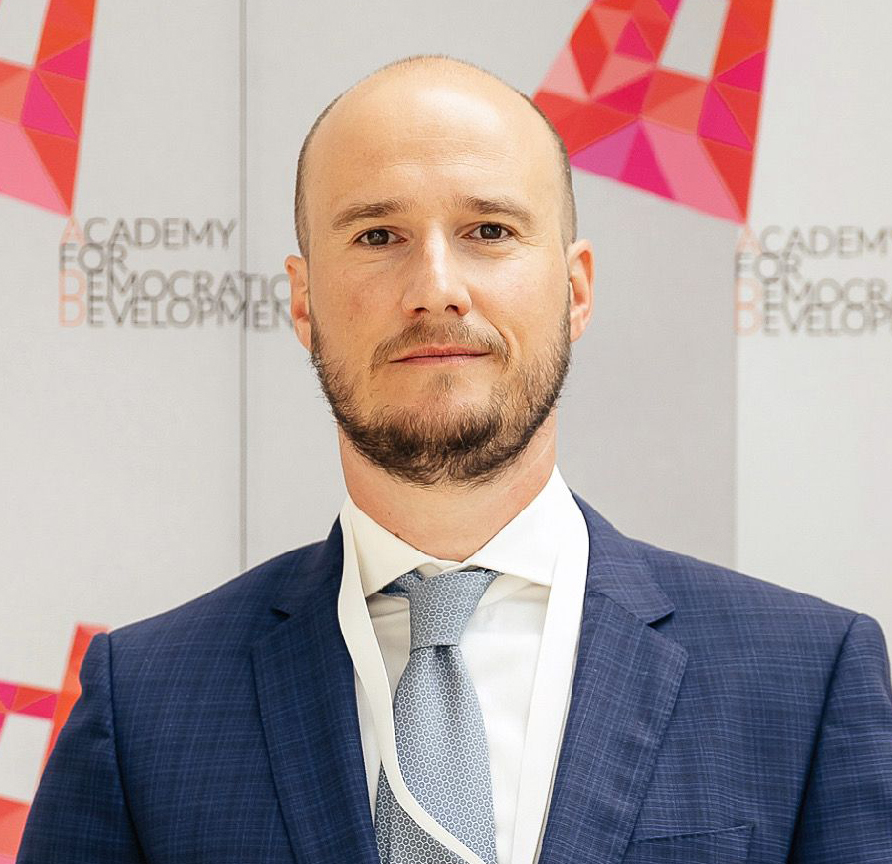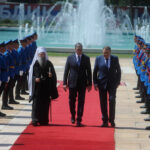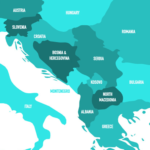Main Similarities Between the Serbian and Russian States and Their Ideologies of Greater State Nationalism Today
In both countries, so-called state freedom is placed above individual freedom. Therefore, they are authoritarian societies with national leaders. The state is considered the ultimate value, and thus there is a constant effort to create a state without society, i.e., an attempt to align the state with society. In this sense, it is emphasized that states are older than nations and that Serbia and Russia existed even before the modern concept of a nation.
In such a concept, territory is only a substitute for development and modernization. Therefore, both Serbia and Russia choose the size of the state territory over the freedom and quality of states and societies within them. Serbia and Russia have the same arguments towards Europe and the Western Balkans, which are: “We liberated you in the war, and therefore we should have a privileged position” (Russia thinks of the Second World War, and Serbia of the First). The narrative of the endangerment of Serbs in the region, i.e., Russians, implies that war and every most brutal and aggressive response is legitimate. Protecting the people in the region is the supreme narrative. Both Putin and Vučić have uttered identical sentences such as: “We will protect our people wherever they are in the region.”
The dominant narrative in Serbia that denies the crimes committed in the 1990s and celebrates convicted war criminals is: “If the genocide in Srebrenica against Muslims in Bosnia had not happened, Jasenovac would have happened again, i.e., the pogrom of Serbs in World War II.” Russia uses the same narrative, claiming it is defending itself by attacking Ukraine. The West as an enemy that has conspired against Serbia, i.e., Russia. The main thesis is the war of the West against the Slavs.
What Soviet tanks and the tanks of the Yugoslav People’s Army did at the beginning of the war in Yugoslavia, today is done by the cassocks of the priests of the Russian and Serbian Orthodox Churches. Thus, in both cases, the church is positioned as the guardian of the identity and idea of the great state in which all Serbs, i.e., all Russians, live. Both churches, Serbian and Russian, have long had nothing to do with religion and Christianity, but represent a para-political organization advocating the unity of church and state.
The belief promoted to citizens is that they are surrounded by enemies and imposed states. In the case of Serbia, these are Croatia, Bosnia, Montenegro, and Kosovo. In the case of Russia, the thesis about Ukraine as a provisional state dominated, behind which stands the evil West to subjugate Russia. The party state as a legacy of communism with a nationalist garb. Every pluralism and democratic aspiration is considered a weakness. The understanding of both nationalisms has led to one party and “unity of the people” to more easily oppose the enemy, the so-called one-party pluralism in Serbia. This further requires a leader, that is, an authoritarian personality as a ruler instead of the division of power into branches. Everything is concentrated in the leader or autocracy in Russia.
In such circumstances, violence is the method through which the essence of the ideology speaks, further normalizing violence and war. The slogan during the wars of the 1990s in Serbia was: “War for peace.” Today, Putin calls the aggression a “special intervention” to preserve peace.
Both states have emphasized centralism, considering any decentralization as separatism and betrayal. State economy is always the solution instead of market economy, and the political opponent is viewed solely as an enemy.
In modern Serbian history, the state apparatus has killed President Ivan Stambolić, Prime Minister Zoran Đinđić, and opposition leader Oliver Ivanović. In modern Russian history, the state apparatus has killed Boris Nemtsov, Alexei Navalny, and many others.
Nationalism is recognized as the only tradition in both cases. The Middle Ages are used as a crucial argument, and there is talk of “historical rights” that Serbia, i.e., Russia, have in their surroundings. The intellectual elite in the service of the party state and autocracy. Denial of every critical thought considered a betrayal of national interests. Thus, the elite is in the service of the state and the system, not the citizens. In such a society, historical revisionism is a method of defending the ruling ideology and the parastatal system. It is important to mention that Russia is repeating the Serbian war of the 1990s – Chechnya, Georgia, and Ukraine as once Croatia, Bosnia and Herzegovina, and Kosovo.
Conclusion – Surround Serbia with Success
The conflicts in Ukraine and the Middle East have sharply illuminated Europe’s vulnerabilities. These events confront Europe with new circumstances that require consolidation of its strength, reorganization of its internal capacities, and continuation of its role as a beacon of peace, democracy, and freedom across the continent. In these changing geopolitical environments, the European Union (EU) faces a lack of capacity to defend Ukraine or influence the cessation of hostilities in the Middle East. However, the EU has the ability to address and resolve the situation within its immediate neighborhood, particularly in the Western Balkans.
The start of the Russian invasion of Ukraine has further complicated dynamics in the Western Balkans. Russia has demonstrated not only its ability to halt the region’s progress towards EU integration but also its ability to create unrest, create instability, and intimidate Europe by suggesting the possibility of opening a “second front” in the Balkans. Although it does not have the power to cause a large-scale war in the region, Russia has shown that it can cause disturbances in northern Kosovo (as evidenced by the terrorist attack in Banjska, Kosovo), thereby signaling to the EU and its Western allies its active and destructive presence in the Western Balkans. This malicious influence is mostly carried out through the regime of President Aleksandar Vučić in Serbia. Vučić’s administration, along with Lukashenko’s in Belarus, stands out in Europe for its refusal to align Serbian foreign and security policy with the EU’s policy. That would be practically impossible, as Serbian foreign and security policy is already aligned with Putin’s. Amidst the conflict in Ukraine, Serbian officials have been awarded by Putin for adhering to the so-called policy of military and foreign neutrality, which in reality only serves the Russian regime. Serbia remains the only nation, apart from Belarus, that has not imposed sanctions on Russia but has chosen to deepen its cooperation with Russia since the start of the aggression against Ukraine. Thus, Russia not only hinders Serbia’s integration into the EU and reform processes but also extends its influence to northern Kosovo, Montenegro, Bosnia and Herzegovina, and even North Macedonia.
First, the political instability of the six small states in the Western Balkans should be addressed by the European Union. The EU must emphasize that the Western Balkans fall within its sphere of influence and interest. It needs to show the functionality of its political mechanisms and its ability to successfully integrate the Western Balkans. Such actions would significantly boost the EU’s confidence because becoming a global power requires proving its efficiency as a regional power first.
Second, it is time for EU member states to share some of the burden of European integration of the Western Balkans, showing additional solidarity with efforts to consolidate the EU. These processes must progress in parallel. It is widely accepted that the existing model of European integration has exhausted its capacities and trust, requiring a refreshed approach, especially with the help of the EU member states themselves. Here, the model of European integration for the Baltic countries deserves consideration.
During the 1990s, as the three Baltic countries began their path to EU membership, three Nordic EU member states – Denmark, Sweden, and Finland – formed partnerships with Lithuania, Latvia, and Estonia. These Nordic countries provided training for public officials, assistance in aligning laws, building institutions, and establishing the necessary decision-making and implementation procedures. They also facilitated communication with EU institutions. This approach is considered the most successful example of EU integration ever.
Applying the “Baltic model” to the Western Balkans suggests that partnership with the region’s aspirants cannot come from the largest EU member states or neighboring countries due to potential political agendas that could undermine trust among Western Balkans citizens. Instead, six EU member states – primarily Finland, Denmark, Sweden, Ireland, the Netherlands, and Estonia (the latter representing the success of the Baltic model) – could serve as partners. These nations are stable democracies without specific regional political agendas and possess a strong commitment to the EU.
Significance of the Baltic Integration Model for the Western Balkans (and for Moldova, Georgia, and Ukraine):
The relevance of the Baltic countries’ experience for the Western Balkans goes beyond their democratic achievements and economic stability. Their most important advantage is their extensive experience in countering Russian influence, the main vulnerability of Western Balkan states, especially Serbia, the largest among them and most susceptible to Russian influence. Hence, the potential solution to the issue of Serbia in the Western Balkans and the need to surround Serbia with success for the EU to counter Russian influence. The EU needs one successful integration by 2030 to restore credibility and agility, which is particularly relevant in the context of Ukraine, Georgia, Moldova, and the Western Balkans.
Montenegro, despite its small size and economy, is on the verge of EU membership but faces political crises caused by pro-Russian and pro-Serbian factions aiming to disrupt its European path. Nordic and Baltic countries can support Montenegro, Albania, North Macedonia, Kosovo, and Bosnia and Herzegovina in their democratic reforms and European integration efforts, symbolizing the return of Europe to the Western Balkans.
Serbia, with its few pro-European opposition forces and societal need to break free from decades-long Moscow’s influence, requires strong and decisive partners like the Nordic and Baltic states to realign with Europe. The “Baltic model” of European integration could serve as a key instrument for the region’s European integration, ensuring peace and stability in southeastern Europe, and ultimately providing Serbia with the opportunity to undergo its internal democratization, unlocking its European path and initiating its fundamental distancing from Russia, thereby disentangling the other Western Balkan states from the Russian-Serbian knot.
The articles published in the “Opinions” column reflect the personal opinion of the author and may not coincide with the position of the Center
Balša Božović
Chair of the executive committee of the Regional Academy for Democratic Development (Serbia).




